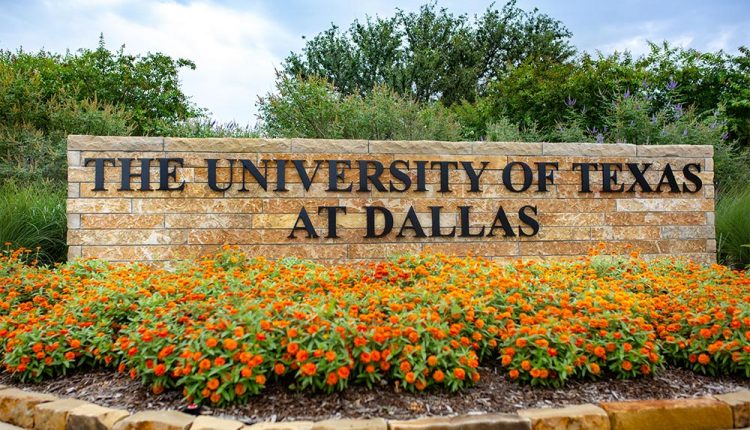University Of Texas At Dallas Researchers Highlight Life Of Mental Mapping May Build Roadblocks Against Alzheimer’s
Could the freeways or backroads you spend your life navigating make a crucial difference in your cognitive health as you age?
Two University of Texas at Dallas researchers — a geographer and a neuroscientist — recently teamed up to investigate whether frequent use of the spatial navigation region of the brain might help fend off the onset of Alzheimer’s disease, a form of dementia that affects nearly 6 million Americans.
Dr. May Yuan, Ashbel Smith Professor of geospatial information sciences (GIS) in the School of Economic, Political and Policy Sciences, and Dr. Kristen Kennedy, associate professor of psychology in the School of Behavioral and Brain Sciences, published a study online Jan. 26 and in the February 2023 print edition of The Journal of Prevention of Alzheimer’s Disease that examined data on more than 22,000 patients from the National Alzheimer’s Coordinating Center (NACC).
Their analysis, which included using a neural network model and machine learning to sift through the data, indicates a strong relationship between the complexity of an individual’s environment and their likelihood of developing Alzheimer’s.
The hippocampal formation, a region within the brain’s medial temporal lobe, is often the earliest to show degradation in Alzheimer’s disease. It is also the region involved in landmark-based navigation and mapping abilities. That link inspired Yuan, a geographer who uses GIS data to address social and environmental problems, to investigate.
“Geospatial information science involves technology that helps people navigate,” Yuan said. “Given that those parts of the brain deal with recognizing places, environments and the routes we take every day and are linked to early Alzheimer’s, I began to wonder what would happen if we exercised those brain regions more. Could it have a nonpharmaceutical effect to either delay Alzheimer’s or slow its progression?”
To test the theory, Yuan consulted Kennedy, who suggested using the large NACC data sets that combined subjects’ Alzheimer’s diagnoses with detailed demographic information, including ZIP code data.
“All the other measures that scientists study … are … co-variates, not the factors that actually give you Alzheimer’s. Our machine-learning algorithms are tracking something that could be mechanistic, not just correlative. That’s why this is such a big deal — and these initial results are compelling.”
Dr. Kristen Kennedy, associate professor of psychology in the School of Behavioral and Brain Sciences
“Our hypothesis is that if you navigate spatially complicated environments for most of your life, you’re firing the brain cells in your hippocampal formation that make cognitive maps,” said Kennedy, an expert on the neurobiology of aging and cognition in UTD’s Center for Vital Longevity and corresponding author of the study. “If you live in a one-stop-sign town, you don’t normally practice and experience this. As a result, you’re not preserving those brain circuits.”
A comparison of each patient’s Alzheimer’s status with education level, socioeconomic level and gender found no significant differences across ZIP codes, Yuan said. Based on the geographical complexity of each ZIP code, the program predicted whether residents were more likely to be cognitively normal or have a high incidence of Alzheimer’s.
“Given the environmental complexity of an area, the neural network model can predict with 95% precision and 84% accuracy if the area is characterized as normal or Alzheimer’s inclined,” Yuan said.
The strongest features of the Alzheimer’s-inclined zones included longer average street length, higher circuity — indicating winding roads — and fewer points of interest. Most cognitively normal zones were in or near urban areas with high environmental complexity measures.
“All the other measures that scientists study — like socioeconomic status, level of education, income and so on — those things are co-variates, not the factors that actually give you Alzheimer’s,” Kennedy said. “Our machine-learning algorithms are tracking something that could be mechanistic, not just correlative. That’s why this is such a big deal — and these initial results are compelling.”
Yuan said the next step would be to design a human subject test to delineate the actual factors at play and determine whether there is a causal relationship between exposure to complex navigation and Alzheimer’s.
“Ideally, in that experiment, we would monitor subjects’ brain activities to affirm that exercising the spatial cell systems in the brain can have health benefits,” she said. “We do recognize that Alzheimer’s is a very complicated disease and that there are many other variables that go into Alzheimer’s susceptibility; nevertheless, if this can lead us to a way to mitigate Alzheimer’s without pharmaceutical intervention, that will be good news.”
The researchers said that if their theory holds up, then cognitive map building might serve as an intervention to dementia or Alzheimer’s and could lead to redesign of GPS navigation systems to drive cognitive map building, instead of simply following the blue dot.
“The entorhinal cortex is where this spatial cognitive ability to do allocentric navigation originates, learning to deal with environmental complexity,” Kennedy said. “Allocentric navigation is about landmarks — for example, when someone can get to the grocery store because they know to turn left at the corner where the church is.”
Kennedy said two major behaviors mark early Alzheimer’s: memory problems and getting lost.
“Ninety percent of the work on Alzheimer’s and cognition in general is on studying memory. A tiny fraction is on studying wayfinding and navigation and getting lost,” she said. “We’re telling the rest of the field, ‘Here’s some evidence that shows we’re onto something. Please go test this theory.’ I’m so excited about it.”
The study was supported by a grant (R21AG069267) from the National Institute on Aging (NIA), a component of the National Institutes of Health. The NACC database is also funded by the NIA.

